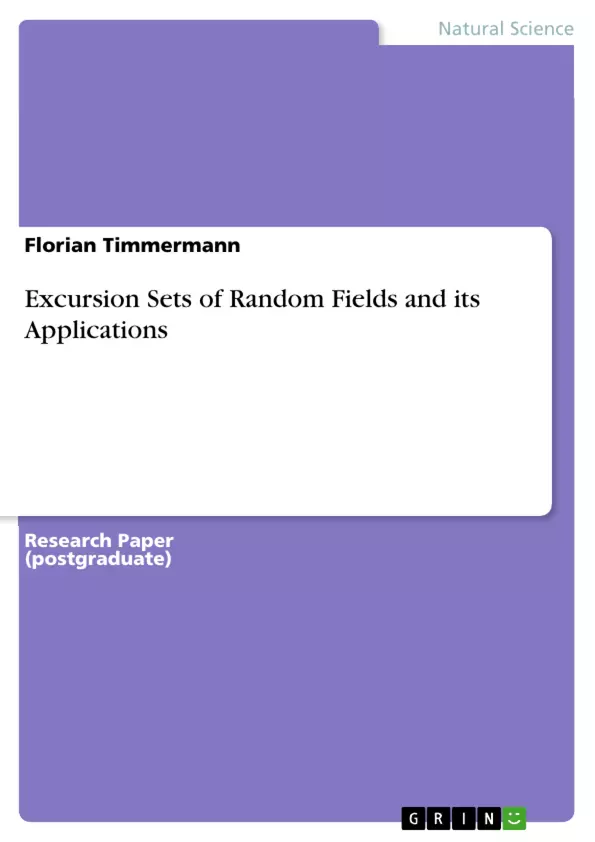This work combines two beautiful branches of mathematics: geometry and random fields. The mathematical basics needed to understand the theory are developed carefully. Enriched with illustrative examples an easily implementable method for the analysis of a wide range of surfaces, e.g. paper or metallic surfaces, is provided and therefore suits for direct application.
Inhaltsverzeichnis (Table of Contents)
- Introduction
- Preliminaries
- Probability spaces and random variables
- Probability distributions
- Moments and characteristic functions
- Gaussian distribution
- Special distributions
- Stochastic processes
- Finite dimensional distributions
- Stationary processes
- Weak convergence of probability measures
- Convergence of stochastic processes
- Donsker's theorem
- Central limit theorem for weakly dependent processes
- Gaussian random fields
- Basic definitions and properties
- Stationary Gaussian fields
- Examples of Gaussian fields
- Weakly dependent Gaussian fields
- Mixing conditions
- Central limit theorems for weakly dependent Gaussian fields
- Applications to statistics
- Non-stationary Gaussian fields
- Spectral representation
- Central limit theorems for non-stationary Gaussian fields
- Applications of Gaussian fields
- Spatial statistics
- Image analysis
- Machine learning
Zielsetzung und Themenschwerpunkte (Objectives and Key Themes)
This book aims to provide a comprehensive introduction to Gaussian random fields, covering both theoretical and practical aspects. It focuses on the study of weakly dependent Gaussian fields, which are widely used in various applications, such as spatial statistics and machine learning.
- Basic properties and definitions of Gaussian random fields
- Central limit theorems for weakly dependent Gaussian fields
- Applications of Gaussian fields in different fields
- Statistical inference for Gaussian fields
- Simulation and estimation of Gaussian fields
Zusammenfassung der Kapitel (Chapter Summaries)
- Introduction: This chapter introduces the concept of Gaussian random fields and their importance in various fields. It also provides a brief overview of the book's structure and key themes.
- Preliminaries: This chapter reviews essential concepts from probability theory, including probability spaces, random variables, probability distributions, and stochastic processes. It lays the foundation for the subsequent chapters on Gaussian fields.
- Gaussian random fields: This chapter formally defines Gaussian random fields and discusses their basic properties. It also explores the concept of stationary Gaussian fields and provides various examples of Gaussian fields.
- Weakly dependent Gaussian fields: This chapter focuses on weakly dependent Gaussian fields, which are characterized by certain mixing conditions. It discusses various central limit theorems for such fields and explores their applications in statistical inference.
- Non-stationary Gaussian fields: This chapter deals with non-stationary Gaussian fields, which lack the stationarity property. It explores their spectral representation and discusses central limit theorems specifically for this type of Gaussian field.
- Applications of Gaussian fields: This chapter highlights the wide range of applications of Gaussian fields in diverse fields such as spatial statistics, image analysis, and machine learning. It provides concrete examples and discusses practical considerations.
Schlüsselwörter (Keywords)
This work focuses on the study of Gaussian random fields, particularly weakly dependent Gaussian fields. Key themes include mixing conditions, central limit theorems, statistical inference, spatial statistics, image analysis, and machine learning. It explores theoretical concepts alongside practical applications, covering topics like spectral representation, simulation, and estimation of Gaussian fields.
- Quote paper
- Florian Timmermann (Author), 2011, Excursion Sets of Random Fields and its Applications, Munich, GRIN Verlag, https://www.grin.com/document/172805



